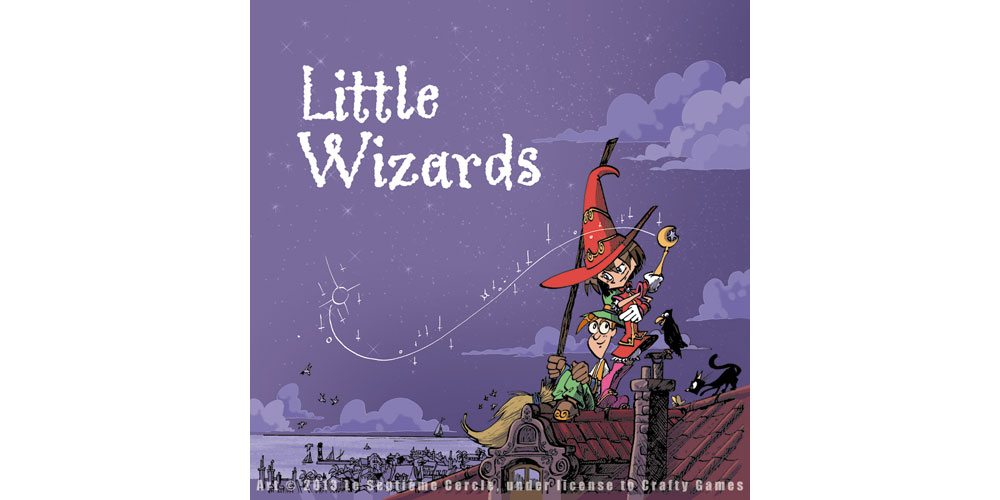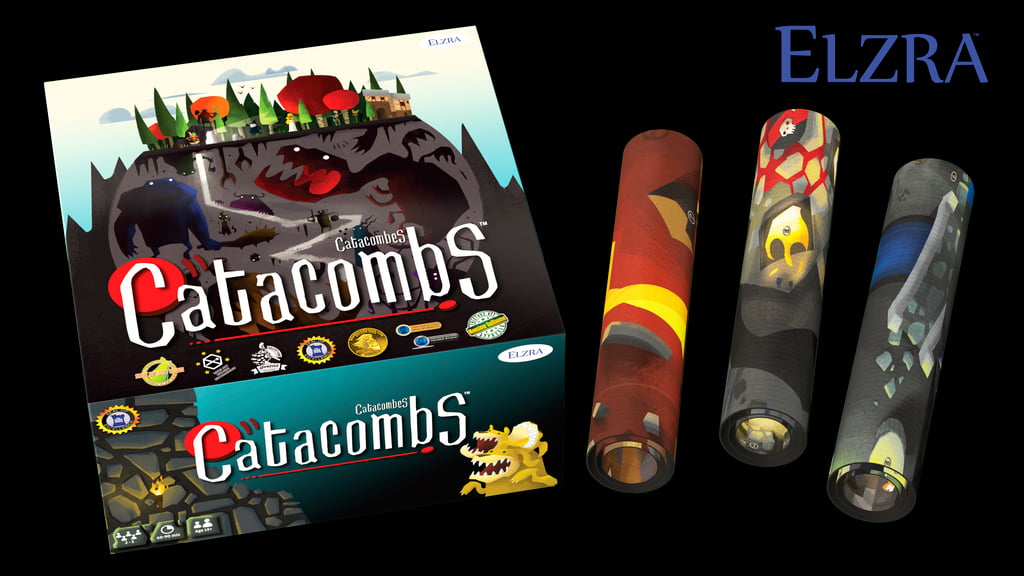I love role-playing games. I love rolling dice, the teamwork, and thinking creatively to solve problems. I love the epic scale of a building a character and leveling him up, the continuity of a campaign, and the impact RPGs have had on all gaming. But, above everything else, I love the storytelling. The imagination and quick-thinking of a good GM can turn a game into an incredibly moving, magical, and memorable experience.
When my kids were younger, I couldn’t wait to introduce them to role-playing games, but the “Age: 12+” on D&D‘s Red Box taunted me like a shadow dragon guarding a tremendous hoard of gold. We ended up getting started with Dungeons & Dragons well before the twelfth birthday rolled around, but we weren’t idle until then. Over the years, I tried a number of RPGs aimed at younger kids. I wrote about some of them here, at GeekDad. While many of them were fun and a very good time, they were nowhere near as good as the recently released Little Wizards from Crafty Games.
Little Wizards is from Antoine Bauza, one of my favorite game designers. Bauza is responsible for Ghost Stories, Takenoko, Tokaido, and the fantastic upcoming dexterity game Rampage. He also created the Spiel des Jahres winners 7 Wonders and Hanabi. The new release of Little Wizards comes in the form of a book and is based on Bauza’s 2005 release of (and the 2007 supplement to) Contes Ensorcelés, which has now been translated into English and augmented with a few rule tweaks.
What makes Little Wizards so good is its focus on imagination, storytelling, involvement, empowerment, and cooperation. The game is targeted at kids aged 6 to 10 and their families and the game has been lovingly crafted to be perfect for those ages.
The story takes place on a hard-to-find planet called Coinworld. It’s a planet similar to Earth, but a bit behind in technology; they still communicate via mail and cars are a new invention. The planet is shaped similarly to a coin, with two sides — Heads and Tails. Heads is covered by a deep blue ocean, which holds a number of archipelagos, just waiting to be explored. The people of Heads live in harmony with nature, amid magnificent forests, mountains with cool springs and rivers, and great plains “caressed by fragrant winds.”
On the other side of Coinworld, Tails is a bit gloomier. There is a complementary ocean and islands, but the atmosphere is more eerie and strange. The ground is darker, mountains have “sharp, knifelike peaks” and the land contains windswept moors. While the lands are much the same, they also share a unique trait among their peoples. Some children are born knowing sorcery, while others learn magic.
Amid this environment, players create their own characters to explore Coinworld. Kids are given free reign to describe their characters. If they can’t decide, there are pages of suggestions for descriptions, each category (ears, hair, clothes, etc.) broken into six description that can be chosen by rolling a six-sided die.
Characters have three traits, which dictate their capabilities. They are Body, Heart, and Brain and these traits must be assigned a ranking of Good, Better, and Best … but you can only have one Better and one Best trait. Better will give a +1 modifier to dice rolls and Best will give a +2. Players must also choose between being a sorcerer or mage, each with unique powers. Players get to choose two powers from a list of three, unique to the player class, and assign a modifier to these, as well. You also have the option of picking and working with a familiar.
While the game incorporates many aspects of what you might think of in a typical RPG, the typical RPG terminology is framed in language friendly to kids. What’s more, Little Wizards leaves out the elements many RPG players might think of as most important — absent are any statistics equating to armor class or hit points. Rather, Little Wizards focuses on the positive, using a character’s resources to overcome problems. Even when character actions result in failure, the game still moves forward — there is no real losing in Coinworld.
The game is run by a Narrator, a job usually performed by an adult or older kid — especially at first. Similar to a GM, the Narrator describes environments, identifies challenges, and offers hints or suggestions when needed. This information is given to the Narrator in a series of Tales and three of these are included in the Little Wizards book. Each tale takes an hour or two to play through, but are broken into chapters, which provide stopping points for breaks in play.
Along the way, sorcerers and mages will face challenges that they will have to overcome. Like traditional RPGs, this is done by rolling dice. Two six-sided dice control the outcomes and the Narrator is the judge of how high the roll must be to result in a success. There is ample explanation for how to interpret challenges and set minimum rolls. As players progress, they gain experience in the form of Lil’ Points, which allow them to upgrade their traits and powers.
It’s a great game system and one that includes lots of explanation and suggestions to aid the Narrator and help the tales along. One of the things I really appreciate about the included tales is that they guarantee some failures. Role-playing with nothing but success is unrealistic and, honestly, not very fun. Overcoming tough situations is very rewarding and Little Wizards is great in allowing for a quick recovery and teaching that failing isn’t always a bad thing.
In Coinworld, there aren’t any really scary monsters and the frights always seem to end as fun, so Little Wizards is perfect for the growing adventurer. Be sure to allow lots of time for exploring, because so many interesting things can happen when exploring and role-playing. But when you’ve exhausted the three Tales, the journey isn’t over. The book gives you many suggestions for Tales you can create on your own — and that’s when the fun really begins.
Plus, aside from being an absolutely perfect way to lay the groundwork for future, more complex RPGs, the good people at Crafty Games have made Little Wizards very accessible. Not only should you be able to find the book at your friendly local game store, you can purchase from them online for $24.95. If that’s too much, a DRM-free digital edition is available for $14.95. A third version combines the print and digital editions. Finally, the Little Wizards download page is packed with helpful information to help you test-drive, learn more, and make a decision about this great game.
Disclosure: GeekDad was sent a sample of this game for review.






Thanks for bringing this to my attention! cheers
Dave — your timing on this is perfect. I am desperate to begin RPG’s with my three-year-old. So desperate, in fact, that I have begun making up “choose your own adventure” type yarns for him each night. I wrote a blog post about it just the other day!
http://partist.com/2013/10/20/the-perfect-introduction-to-dungeons-dragons/
I am definitely going to pick up Little Wizards and (if I can manage it) wait until my son turns four to try it out 🙂
Thanks!
Great, Robby. I think your son will love this!
Looks interesting, but I much prefer Hero Kids. A little less storytelling but more action and fun for roleplaying kids as heroes.